
Introduction to Metaverse Marketing
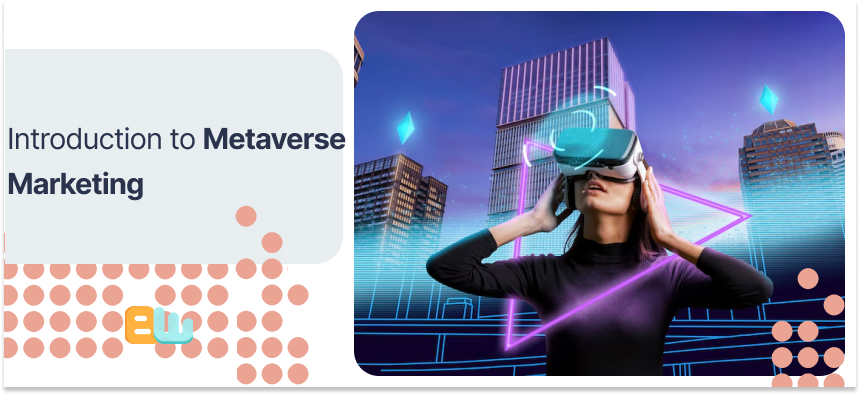
The metaverse is already here and is changing how brands interact with customers in ways that were unthinkable only a few years ago.
The metaverse can be thought of as a network of 3D virtual worlds where users can socialize, play, work, and yes, even purchase, all while using digital avatars. Immersion experiences that seem more real are produced at the intersection of the digital and physical worlds.
What makes marketers interested? Think about it: By 2024, Bloomberg Intelligence projects that the metaverse market could generate $800 billion in revenue. By 2026, 25% of individuals, according to Gartner, will spend at least one hour a day in the metaverse for work, shopping, education, or entertainment.
These are happening right now, not just in the future. Adidas, Gucci, and Coca-Cola have all made substantial online presences, and Nike has already made over $185 million in NFT revenue.
Discover how the metaverse is transforming brand interaction in this article, read about innovative organizations’ successful methods, and get tips on how to position your brand for this digital frontier, even if you’re just starting out.
Understanding the Metaverse Landscape for Brands
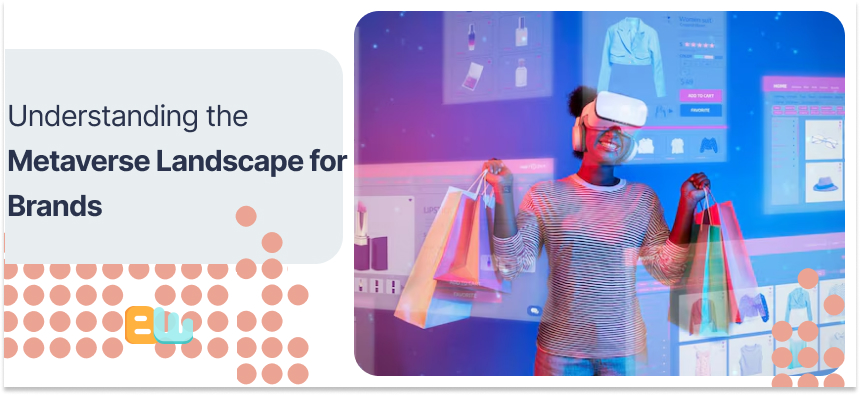
Let’s chart the space where companies can make their claim before getting into methods.
Key Metaverse Platforms Brands Are Leveraging Today
The metaverse is a collection of platforms rather than a single location, and each one offers special opportunities:
Brands such as JP Morgan have set up headquarters in Decentraland’s virtual real estate. Over 43 million people use Roblox every day, and brands like Vans, Nike, and Gucci create branded experiences there. Travis Scott performed for 12.3 million concurrent viewers on Fortnite, which has evolved from a game into a cultural platform. While The Sandbox allows marketers to create and sell experiences through NFTs, Meta’s Horizon Worlds concentrates on social connections.
Your audience and goals should guide the platform you choose. A retailer targeting young people would find greater engagement on Roblox, yet a high-end fashion brand might flourish in Decentraland.
Demographics and User Behavior in Virtual Worlds
Users of the metaverse are more than just computer aficionados or gamers, despite what many people think. 74% of respondents to a Wunderman Thompson survey who are familiar with the metaverse have engaged in some capacity, with Gen Z (81%), and millennials (78%) having the highest adoption rates.
In contrast to conventional social media, users act differently in virtual environments. The typical Roblox user logs on for 2.6 hours every day, during which time they actively participate in the game rather than just passively scrolling. This interaction embodies a marketer’s ideal: complete focus in a captivating setting.
How Metaverse Differs from Traditional Digital Marketing
Traditional digital marketing operates in two dimensions—you scroll, click, and view. A vital third dimension is added by the metaverse: presence.
Customers encounter your brand in the metaverse rather than just seeing it. They engage with your product rather than only reading about it. They are surrounded by your message, not simply hearing it.
The marketing equation is radically altered by this transition from observation to participation. Success is determined by meaningful interactions, time spent, and emotional ties rather than impressions or clicks.
5 Groundbreaking Ways Brands Enter Virtual Worlds

Let’s examine how forward-thinking companies are making their mark in these emerging digital spaces.
Creating Immersive Virtual Brand Experiences
In addition to using Fortnite for advertising, Balenciaga developed a whole fashion-themed universe where users could buy virtual clothing for their avatars. Players could actually enter the brand experience, which went beyond simple product placement.
Walmart has submitted patent applications for online stores where consumers may browse aisles, interact with merchandise, and make purchases from the comfort of their own homes.
These experiences extend beyond novelty to create memorable brand touchpoints that traditional channels simply cannot match.
Designing experiences that take advantage of virtual worlds’ special characteristics is more important than merely digitally replicating offline marketing.
Designing Digital Products and NFT Collections
With no expenses for production, shipping, or inventory, digital products offer favorable margins and a steadily increasing revenue stream.
The virtual Queen Bee Dionysus bag from Gucci sold for more than $4,000 on Roblox, surpassing the price of the real one. The “cryptokicks” made by Nike’s RTFKT Studios are compatible with several metaverse platforms. These are product lines with actual income potential, not only promotional things.
Non-fungible tokens, or NFTs, provide digital products a sense of exclusivity and authenticity. Taco Bell’s NFT tacos sold out in 30 minutes, while Coca-Cola’s first NFT collection sold for almost $575,000. These limited digital assets build exclusivity while creating new customer relationships.
Building Metaverse-Native Communities and Spaces
Communities form the heart of metaverse engagement. Adidas constructed their “adiVerse” in The Sandbox, a location where followers congregate, communicate, and take part in brand events. Over 48 million people visited Vans’ “Vans World” on Roblox to skate, interact with others, and shop.
These spaces function as persistent brand environments that users return to repeatedly—something impossible with traditional digital marketing.
The most successful brand spaces provide genuine value: entertainment, social connection, or utility. They become destinations rather than advertisements.
Hosting Virtual Events and Product Launches
Warner Bros. established a virtual community in Roblox for the debut of “In the Heights” so that fans could engage in activities, gather virtual goods, and go to screenings together. The event attracted more than 4 million people.
BMW unveiled a new concept car using Spatial, which gave guests the opportunity to peek inside, see the car from any aspect, and even personalize features—experiences that aren’t available at in-person premieres.
Geographical restrictions are removed by virtual events, which also offer data insights not possible during in-person meetings.
Implementing Virtual Try-Before-You-Buy Solutions
One of the biggest problems with e-commerce is the opportunity to “try” things online. Using augmented reality, L’Oréal’s virtual makeup try-on lets you see how items appear on your real face. Before making a purchase, buyers can use IKEA’s virtual room planner to evaluate how furniture will fit in their space.
These applications use metaverse technology to improve conventional purchasing journeys, bridging the gap between virtual and physical commerce. They represent practical applications that deliver immediate ROI while building metaverse capabilities.
The Psychology Behind Metaverse Brand Engagement
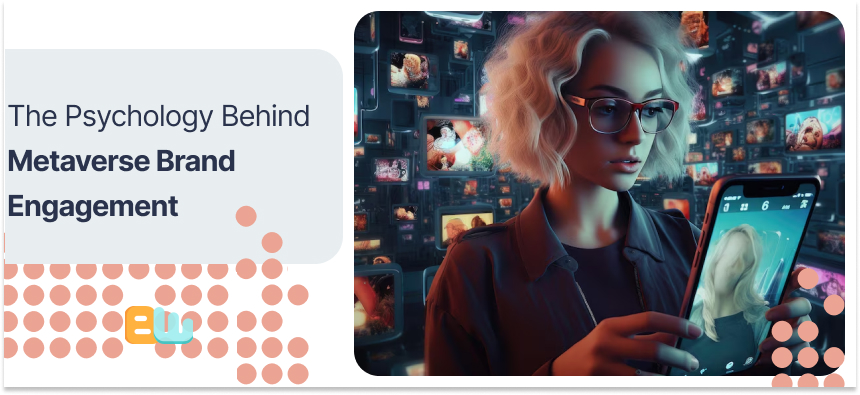
Understanding why virtual environments create such powerful brand connections can help you craft more effective strategies.
Why Consumers Connect Deeply in Virtual Environments
The metaverse triggers psychological states that strengthen brand relationships. Virtual encounters can produce “presence”—the sense of truly being somewhere—which boosts memory formation and emotional engagement, claims Stanford’s Virtual Human Interaction Lab.
Additionally, virtual worlds provide you what psychologists refer to as “psychological ownership”—the sense that something is yours. Users form attachments to related brands when they personalize an avatar or virtual environment.
These psychological mechanisms explain why metaverse experiences often create stronger emotional responses than traditional digital media.
Building Emotional Connections Through Avatar Interaction
Avatars are extensions of identity rather than merely fictional characters from video games. According to research, people are very particular about the appearance and behavior of their avatars. Brands become a part of users’ digital self-expression when they offer relevant avatar experiences, such as Ralph Lauren’s virtual sportswear or Balenciaga’s virtual apparel.
Additionally, brand agents can communicate with customers avatar-to-avatar, fostering a large-scale personal relationship. When Wendy’s avatar entered Fortnite and began destroying burger freezers (promoting their “fresh, never frozen” message), it became an authentic participation in the community rather than an interruption.
How Metaverse Presence Enhances Brand Loyalty
Shared virtual experiences create strong community bonds. In addition to selling virtual goods, Forever 21’s Roblox store served as a platform for people with an interest in fashion to interact with one another. Loyalty is increased when these social ties are linked to the brand.
The metaverse also enables persistent relationships beyond traditional marketing touchpoints. Through virtual spaces and resources, customers can sustain continuous relationships with brands instead of interacting with them through sporadic advertisements or in-store visits.
Measuring ROI: Are Your Metaverse Efforts Working?
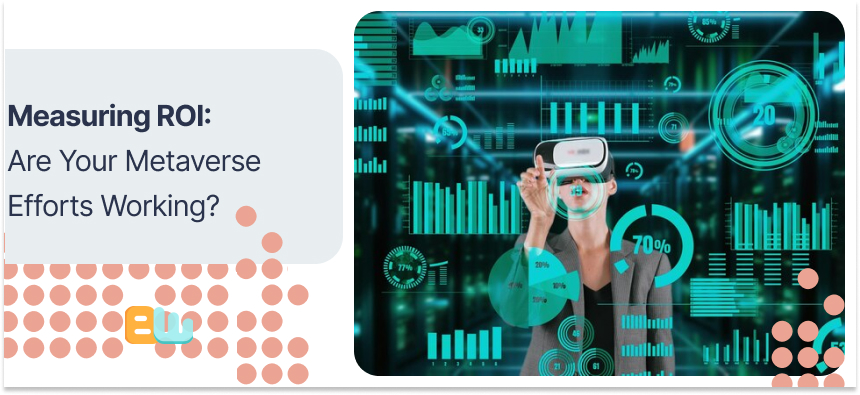
With significant investments required, measuring metaverse marketing effectiveness becomes crucial.
Key Performance Indicators for Virtual Marketing
Traditional metrics like impressions or click-through rates don’t capture metaverse success. Instead, focus on:
Engagement depth: Time spent in brand experiences, interactions completed, and return visits.
Virtual commerce: Sales of digital products, influence on physical purchases, and virtual economy participation.
Community metrics: Active participants, user-generated content volume, and community growth rates.
Brand sentiment: Emotional response, social sharing, and conversation analysis.
Remember that metaverse marketing often builds long-term brand equity rather than driving immediate sales. Balance short-term metrics with longer-term brand impact measurements.
Tools for Tracking Engagement in Virtual Worlds
Each platform offers native analytics, but comprehensive measurement requires specialized approaches:
Heat-mapping tools visualize where users spend time in virtual spaces. Journey tracking follows users through complex virtual experiences. Sentiment analysis tools monitor conversations across virtual and traditional channels. Custom surveys and feedback mechanisms gather qualitative insights.
Advanced brands are developing proprietary metrics frameworks that align virtual world activities with business outcomes. This remains an evolving area where experimentation is essential.
Case Studies: Brands Succeeding with Measurable Results
Chipotle’s Roblox restaurant allowed users to roll virtual burritos and earn real-world food. The campaign reached 12.5 million users, and Chipotle tracked a direct correlation between virtual participation and app downloads—a clear conversion path.
NASCAR produced a virtual automobile in Jailbreak (Roblox) that players could purchase using in-game currency. The car was purchased over 24 million times, creating measurable interaction while introducing the brand to younger consumers.
During the FIFA World Cup, Budweiser’s parent company, AB InBev, constructed a virtual brewery in Decentraland. They tracked visitor numbers, time spent, interactions performed, and social media amplification to create a complete ROI picture.
7 Challenges Brands Face When Entering the Metaverse
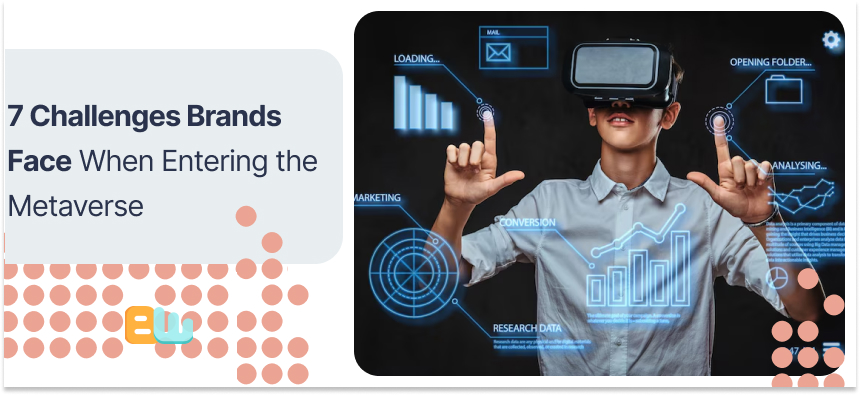
There are still a lot of obstacles for companies navigating virtual environments, despite the opportunities.
Technical Barriers and Platform Limitations
Most marketing teams lack the specialist knowledge in 3D modeling, game design, and blockchain technology needed to create metaverse experiences. Every platform has its own technological specifications and constraints.
The solution? Many brands partner with specialized agencies or platforms rather than building in-house capabilities immediately. Start with smaller projects to build expertise before major investments.
Interoperability remains limited—assets created for one platform typically don’t work in others. This fragmentation increases costs and complexity for multi-platform strategies.
Privacy and Data Security Concerns
Through VR headsets, the metaverse gathers hitherto unheard-of data, including voice, social interaction, movement patterns, and even biological information. There are significant privacy concerns here.
Brands must navigate evolving regulations while maintaining consumer trust. Transparent data policies and opt-in approaches become essential as virtual worlds generate increasingly personal data.
Blockchain-based platforms add additional considerations around cryptocurrency wallets and NFT ownership that many legal and compliance teams aren’t prepared to address.
Reaching and Maintaining Authentic Engagement
Early metaverse marketing successes have created rising expectations. Users quickly distinguish between brands genuinely participating in communities versus those simply exploiting new channels for advertising.
Successful brands approach virtual worlds with humility and cultural awareness. When luxury brand Burberry created digital accessories for Blankos Block Party, they took time to understand platform culture rather than imposing their traditional brand voice.
Authenticity requires consistent presence and community interaction—not just campaign launches. This represents a resource commitment many brands underestimate.
Managing Brand Safety in Decentralized Environments
Decentralized platforms pose particular difficulties for brand security. When clothing shop Forever 21 first opened for business on Roblox, they ran into issues that are hard to manage in open platforms, such as unapproved resellers and unacceptable avatar behavior in their virtual store.
By establishing policies for virtual agents and keeping an eye on areas linked to their brands, brands must strike a balance between transparency and security. It becomes crucial to have explicit escalation protocols for inappropriate behavior.
Because many platforms are decentralized, brands must either build their own moderation skills or collaborate with specialized services in order to handle issues that arise.
Future Trends: Where Metaverse Marketing Is Heading
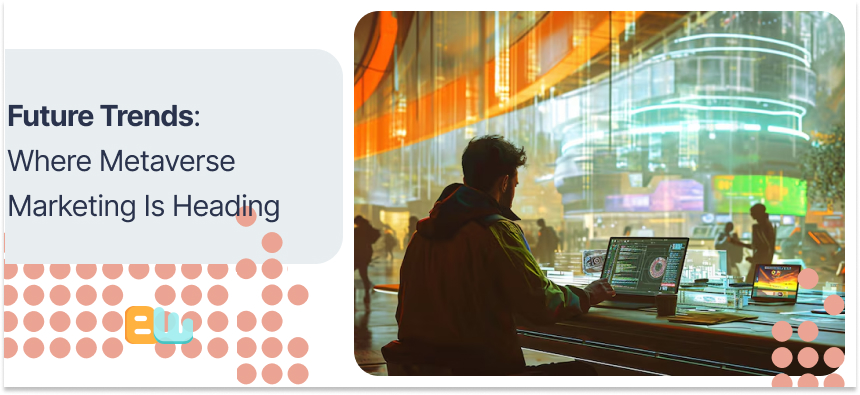
To stay ahead, marketers should watch these emerging developments.
How AI Will Transform Virtual Brand Interactions
AI-powered virtual brand representatives will enable personalized interactions at scale. Imagine customers entering your virtual store and being greeted by an AI assistant that remembers their preferences and history.
The technology already exists—H&M’s virtual assistant in The Sandbox provides personalized style advice, while Samsung’s virtual humans can maintain natural conversations with multiple users simultaneously.
These AI representatives will become increasingly sophisticated, handling complex interactions while gathering valuable customer insights.
The Integration of Physical and Digital Marketing
The future isn’t virtual or physical—it’s both. Successful brands will create seamless experiences spanning both realms.
Augmented reality acts as a bridge, overlaying digital elements on physical spaces. Walmart has filed patents for AR shopping assistants that guide in-store navigation while displaying virtual product information.
Physical purchases increasingly include digital components: Nike’s physical sneakers come with NFT versions, while Starbucks links physical purchases to digital collectibles through their Odyssey loyalty program.
Emerging Opportunities in Virtual Commerce
Direct-to-avatar (D2A) commerce—selling products specifically for digital avatars—is projected to become a $3 billion market by 2026. Major fashion houses are already creating digital-only clothing lines.
Virtual goods marketplaces continue expanding beyond gaming platforms. Meta’s Avatar Store allows purchases across their ecosystem, while cross-platform standards like Ready Player Me enable avatar consistency across different virtual worlds.
Subscription models for virtual spaces and experiences represent another growth area, with brands creating premium zones that offer exclusive content and experiences for members.
Actionable Strategies to Start Your Metaverse Marketing

You don’t need massive budgets to begin your metaverse journey. Here’s how to start.
First Steps for Brands New to Virtual Worlds
Begin with exploration. Assign team members to spend time in major platforms, understanding community norms and interaction patterns. Document observations about user behavior and existing brand activities.
Create a simple presence before building complex experiences. Collaborate with existing creators rather than building from scratch. When cosmetics brand NYX entered Roblox, they partnered with established developers to create “NYX Professional Makeup Color Island” rather than developing internal capabilities.
Use existing technologies like augmented reality filters or virtual try-on tools as stepping stones to fuller metaverse participation. These familiar technologies build relevant skills while delivering immediate value.
Building a Sustainable Metaverse Marketing Plan
Develop a three-horizon approach:
– Horizon 1 (0-6 months): Experiment with existing platforms and technologies
– Horizon 2 (6-18 months): Build dedicated experiences aligned with your brand
– Horizon 3 (18+ months): Create innovative applications that differentiate your brand
Align virtual activities with broader marketing objectives rather than treating them as separate initiatives. Virtual worlds should extend your existing brand strategy, not replace it.
Create cross-functional teams involving marketing, technology, legal, and customer experience. The metaverse blurs traditional departmental boundaries, requiring collaborative approaches.
Collaborating with Virtual Influencers and Creators
Native creators understand platform cultures and technical capabilities. Collaborating with them expedites your education while offering genuine links to well-established groups.
Digital personalities with sizable fan bases, known as virtual influencers, present special collaboration prospects. By partnering with virtual influencer Noonoouri, luxury brand Dior was able to reach millions of followers while retaining creative control that is unattainable with human influencers.
Co-creation projects encourage community involvement in brand-related activities. Coca-Cola generated excitement and cut development expenses when they introduced their NFT collection by using design elements from community contributions.
Conclusion: Preparing Your Brand for the Virtual Future
The metaverse is a fundamental change in the way that consumers and companies engage, not just another marketing avenue. Virtual worlds are still developing, but they already present previously unheard-of chances for trade, community development, and immersive participation.
Before making significant investments, successful businesses begin with little experiments in the metaverse and approach it with honesty and curiosity. Instead of merely adapting conventional marketing strategies to new platforms, they concentrate on providing virtual communities with real value.
The most crucial step is just starting the journey. In the words of Wayne Gretzky, “You miss 100% of the shots you don’t take.” Brands that try new things now will gain the skills and knowledge they need to succeed later.
The moment to start is now, regardless of whether you’re prepared to create a virtual flagship store or are only starting to experiment with augmented reality. Beyond merely altering marketing, the metaverse is reshaping the brand-consumer relationship in ways that we are only now starting to comprehend.
Which virtual world would your company assist in developing?
